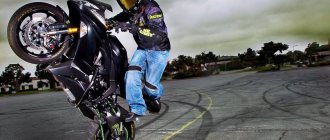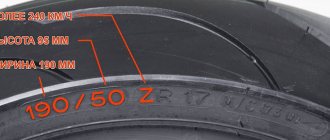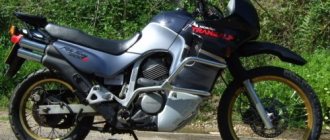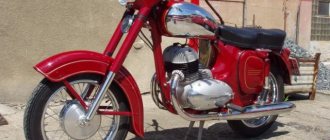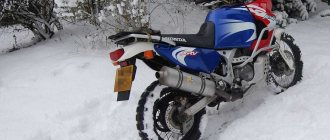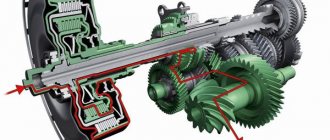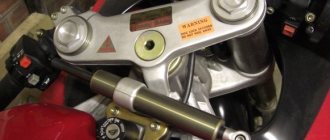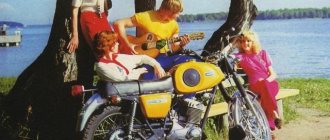Izh Jupiter-5 is one of the most popular motorcycles of the USSR, and was produced from 1987 to 2008 in Izhevsk. Has a fair amount of resources. Reliable, well assembled. It was created as a middle-class motorcycle. Intended for any road surfaces and no surfaces at all. Because of this, it gained great popularity among residents of rural areas. This technique also has high maneuverability and acceptable dimensions. In addition, this one turned out to be economical and unpretentious.
Izh-Jupiter-5 was produced together with Izh-Planet 5 and competed with it. These two motorcycles are almost identical. They differed only in engines. “Jupiter” was equipped with a 2-cylinder engine, and “Planets” with only one. Due to this, the first device had more power.
The youngest Jupiter
On average, every two to two and a half years, the Izhmash motorcycle production plant produces either a new model or one of the modifications of “planets” and “Jupiters”.
General view of the IZH Jupiter-5-01 motorcycle . The fairing, new tank, seat, tool boxes changed the appearance of the motorcycle and modernized its shape.
When we visited Izhevsk in May and walked along the thread of the largest motorcycle conveyor in the country, from which up to 400 thousand cars a year already roll off, we immediately noted for ourselves: the main place in the plant’s production program is occupied by the new IZH Planeta-5 models. and "IZH Jupiter-5-01". True, between them one could see small inclusions of “Planet-4” with two mufflers and an old crew part. But, as it turned out, they were intended for sale in some countries of Asia and Latin America, where they had proven themselves well and where demand for them remained.
Naturally, we wanted to test the new machine in action and subject it to editorial tests. For this purpose, the plant provided us with an IZH Jupiter 5-01 K, with a zero speedometer reading, called, according to the now accepted system, IZH-6.114-01.
In Izhevsk, a tradition has long been established to unify the “planets” and “Jupiters” models produced in parallel to a large extent. The Jupiter-5-01 motorcycle has the same frame, wheels, fuel tank, seat, front fork and shock absorbers, lighting elements, and a number of other parts and components as the “Planet-5” (“Behind the Wheel”, 1987, No. 3).
The modified shape of such elements of the new Jupiter as the fuel tank, tool box lids and seats has noticeably modernized the overall appearance of the car. The tank's capacity - 18 liters - is quite sufficient even for a motorcycle with a sidecar, and the rubber linings that have been returned to it have already been approved by motorcyclists: the tank does not get cold on the knees, and the enamel on it does not wear off.
The very first hundreds of kilometers showed that the new seat was much better than the old one. Well-profiled, moderately soft and quite wide, it is quite comfortable, allows you to change the fit if necessary - in a word, it does not cause premature fatigue on a long journey.
On the days when we received the motorcycle, it was very cold, it was raining in Izhevsk, interspersed with snow, and we asked to equip the motorcycle with a wind shield. This was due to necessity, but although such shields have been developed, they have not yet gone into production. The plant is just preparing for their development. The testers said that several options for shields were blown in a wind tunnel, and the best one was selected, which, as we ourselves saw, can also be called a fairing. The oncoming air flow rises smoothly, bending around the driver's head and without creating turbulence; Although the glass cut is significantly below eye level, you can look at the road without difficulty. Hands are also reliably protected. In addition, the fairing fits well into the silhouette of the car, adding something to its design.
The new car is also equipped with a new instrument panel, which consists of a speedometer (for the first time with a daily mileage scale, which is very convenient), a block of warning lamps and an ignition switch. All this harmoniously combines with the round headlight. The colored indicators are clearly identifiable. However, on our motorcycle, after only 2000 kilometers, dust penetrated inside the lamp unit, and the light of the lamps, especially in sunny weather, became almost invisible.
At first glance, the electrical equipment system has undergone minor, but in fact very serious changes. In the sad memory of Jupiter-4, all the wiring consisted of separate wiring bundles connected to each other by plug connectors. This made assembly easier, but lengthened the current paths, increased the circuit resistance, and greatly increased the likelihood of failures due to oxidation and contamination of the terminals. Already on Jupiter-5 the number of connectors was sharply reduced, and the ignition system was completely free of them. At “zero first” they went even further: now the wires are fastened to the BPV block with screws, which significantly increased reliability and simplified troubleshooting. The ignition switch, as we have already said, is also removed from the common housing - in terms of maintainability, this is very convenient. But one pitfall was discovered here: the ignition key is usually in a bundle with others - and when turning the steering wheel, this garland sometimes gets stuck between the lock body and the damper handle.
Speedometer with daily mileage indicator, warning lamp unit and ignition switch . A set of keys sometimes gets jammed between parts when turning on the ignition or parking lights.
The good characteristics of the motor, which we recorded during tests of Jupiter-5, have now been confirmed again. The motorcycle is very dynamic in the city and strong on the highway. It was possible to overcome inclines of up to 12% (as the road signs say) in fourth gear, and the speed did not drop below 60 km/h.
Operating with a side trailer is known to have its advantages. And its disadvantages. By creating more convenience for the driver - for example, I could afford to have a supply of gasoline in a canister, spare clothes, and something else - the stroller makes all the components work with a much greater load. It is not surprising that after 400 km the bolts had to be tightened, starting from the steering column bridges, the sidecar mounting rods and ending with the engine fasteners.
The front fork works quite hard. This is the downside of unification: the same springs that are intended for a single motorcycle are pre-loaded here and you can feel it. However, on our bike, the knocking noise when the fork is reversed is more of a concern. It seems that the viscosity of the shock absorbing fluid is insufficient. The rear shock absorbers work great in all modes and on all roads.
It seemed to me that the force on the clutch lever was too great. By the end of the second day this impression became very stable. In Moscow, for comparison, I measured the force on the “zero first” and on the YAVE-638 with a dynamometer. The results are disappointing: on YAVE the force was 8 kgf*m, on Jupiter it was one and a half times more.
About fuel consumption now we can only say that in the first hundreds of kilometers it was very high, and then began to decrease noticeably: the running-in process made its own adjustments. And the exact numbers are ahead.
There are no complaints about lighting technology. All flashlight signals are clearly visible even on a bright sunny day. All switches work clearly, without jamming.
Two notes on the side trailer. The hood of the stroller does not adhere to the base - there are gaps in the front part, and through them in the rain water easily penetrates inside. This was not the case on the previous VMZ-9.203 trailer.
At the end of the hood near the armrests, very sharp unrolled panels create a real threat to the passenger. Apparently, you will have to modify this unit yourself.
In general, the first hundreds of kilometers in a new car leave the most pleasant impression. Will it survive? I want to believe.
V. SUBBOTIN, engineer
1988N08P17
Technical characteristics of Izh Jupiter - 5
- Motorcycle weight – 160 kg
- The engine is two-stroke.
- Two cylinders with a volume of 347 cc.
- Cooling - air
- The lubrication system works together with the fuel system. That is, the oil is diluted in gasoline.
- The maximum speed is not much - only 120 km/h.
- Fuel consumption is 4-5 liters per 100 km. This is stated in the technical data sheet. It is impossible to indicate exactly, because the indicator will be different for each type of road. Gasoline is also used - A-76, mixed with oil in a ratio of 25:1.
- The maximum weight a motorcycle can support without a sidecar is 145 kg.
- The gearbox is four-speed. The drive to the rear wheel is a chain.
- Clutch type - multi-disc, permanently closed, in an oil bath.
- Front and rear drum brakes.
It is worth noting that over the entire 20 years that this motorcycle was built, its concept remained unchanged. With each model, these motorcycles became, if not much, but still better than the previous one, and Jupiter-5 was no exception.
If you compare Jupiter-5 with Jupiter-4, then both were practically no different from each other in appearance, but still a couple of details were changed: the torque was increased, the power was slightly decreased. This “little” is 4 horsepower. The fourth model had 28, and the fifth 24 horsepower.
But he won in strength! In terms of design, the shape of the cylinder fins has changed. Other exhaust pipes have been installed. There were also a couple of modifications to this model - cargo and tourist. The first modification was equipped with a side trailer and a spare wheel. The second - a luxury version, did not have a stroller, but it was equipped with a fairing and leg arches.
Five random articles about motorcycles:
Java 638-1-04
What's new in Java?
Last summer, the editors received the latest modification of YAVA-350 638-1-04 from VTO Motokov for testing. A beautiful motorcycle, to say the least! Upon quick inspection, the motorcycle seemed slightly taller than the base model we were used to. They began to figure it out. Indeed, the rear shock absorbers are mounted at a greater angle as a result of the mounting points on the frame being shifted forward. The combination of progressively coiled springs and damper angles ensures a smooth ride. There is no longer any need to stand up on the footrests when the rear wheel flies into a small hole or pothole in the road. The front wheel of our JAVA has a tire with a characteristic road tread (it is equipped with certain batches of motorcycles). With such a tire, the motorcycle feels confident when braking and turning. After some time, the driver gets the feeling that he will be able to drive a familiar turn with a large angle of inclination and, of course, at a higher speed. This is as long as the road is dry. Worth... Read more >>
Using a chain cover from a motorcycle Voskhod on Java 634
Covers for Java On some Java-634 motorcycles (from the first batches of delivery), chain covers fail quite quickly, and it is still difficult to purchase new ones.
Instead, you can use covers from the Voskhod motorcycle to protect the chain. Alteration of the casing: 1— frame; 2—plate; 3— spacer sleeve; 4 - old part of the casing; 5 - extension To secure them. it is necessary to make two extensions 5 (see figure) and two spacer bushings 3, through which we connect the halves of the casing. We make extensions using a mandrel. We weld (or solder) frames 1 to them, which we first cut off from the old casings using a thin chisel. It is advisable to seal all connections on the casing by soldering or another method. For more reliable fastening of the covers, you should make new clamps or strengthen the old ones by welding metal plates to them. On my motorcycle, after a run of 5,000 kilometers, the covers have their original appearance.A. KORNILOV 606230, Gorky region… Read more >>
Needle bearing and piston removal on Java 634 and ChZ 472
Attention: needle bearing Many Czechoslovak motorcycles Jawa-350 and CZ-350, which have arrived to us in recent years, have now traveled 30-50 thousand kilometers.
After such a mileage, naturally, there is often a need to replace worn parts of the cylinder-piston group and the crank mechanism. This work, as the editorial mail shows, causes difficulties for some car owners, since the new engine is structurally somewhat different from its predecessors, which were quite well studied by motorists. To help them, we are publishing an article telling about the features of its design and, in particular, about dismantling the piston. The engine used on all models of motorcycles YAVA-350 type “634” and ChZ-350 type “472”, unlike those produced earlier, has a needle bearing in the upper head of the connecting rod, where previously there was a bronze bushing. It is a steel ring (Fig. 1) with an internal diameter of 20 mm, pressed into... Read more >>
Motorcycles that are waiting. Future newcomers IZH Planet 2 and Jupiter 2
Future newcomers IZH Planet 2 and Jupiter 2 Hundreds of blue IZHs roll off the factory assembly line every day.
This motorcycle won't have long to wait either. A few more efforts and the car will come to life. Motorcycle enthusiasts are well aware of the IZH-Planet and IZH-Jupiter motorcycles. Our plant has been producing them since 1961 - 1962. And since that time, work has been continuously going on to improve them. The reliability of cars has increased significantly, and thanks to this, the warranty mileage of motorcycles has increased by 20 percent. Factory designers work not only to eliminate defects identified during operation, but also to improve the model on the assembly line. Our design bureau also prepared new, modernized models of motorcycles, paying special attention to such qualities as reliability and durability. Now the work on creating and testing new machines has been completed. “IZH-Planet-2” and “IZH-Jupiter-2” are ready for launch. How do they differ from their well-known predecessors? The first thing bro... Read more >>
IZ Planet Sport. Crew part. Tests
The appearance of a new motorcycle model always arouses interest.
And if, moreover, this model marks a milestone in the domestic motorcycle industry, then such interest is all the more understandable and justified. We were not at all surprised when, immediately after the release of the IZH Planet Sport motorcycle on the roads (it was described in No. 1 of the magazine for 1974 - New. IZH Planet Sport and No. 9 for 1975 - IZH Planet Sport Engine) people began to come to the editorial office numerous letters. To answer such letters, we conduct tests, for which factories provide us with machines. Let’s make a reservation right away: the editorial tests do not duplicate the factory tests, but are intended to evaluate the motorcycle from the point of view of an ordinary consumer, whose requests emerge from reader letters. Here we will tell you how we tested the new Izhevsk motorcycle. "IZH-Planet-sport". This promising name promised in advance a meeting with a motorcycle that combines the reliability and simplicity of the road “Planet” with… Read more >>
login registration forgot your password?
Motorcycle goods store About the store Terms and return procedure
